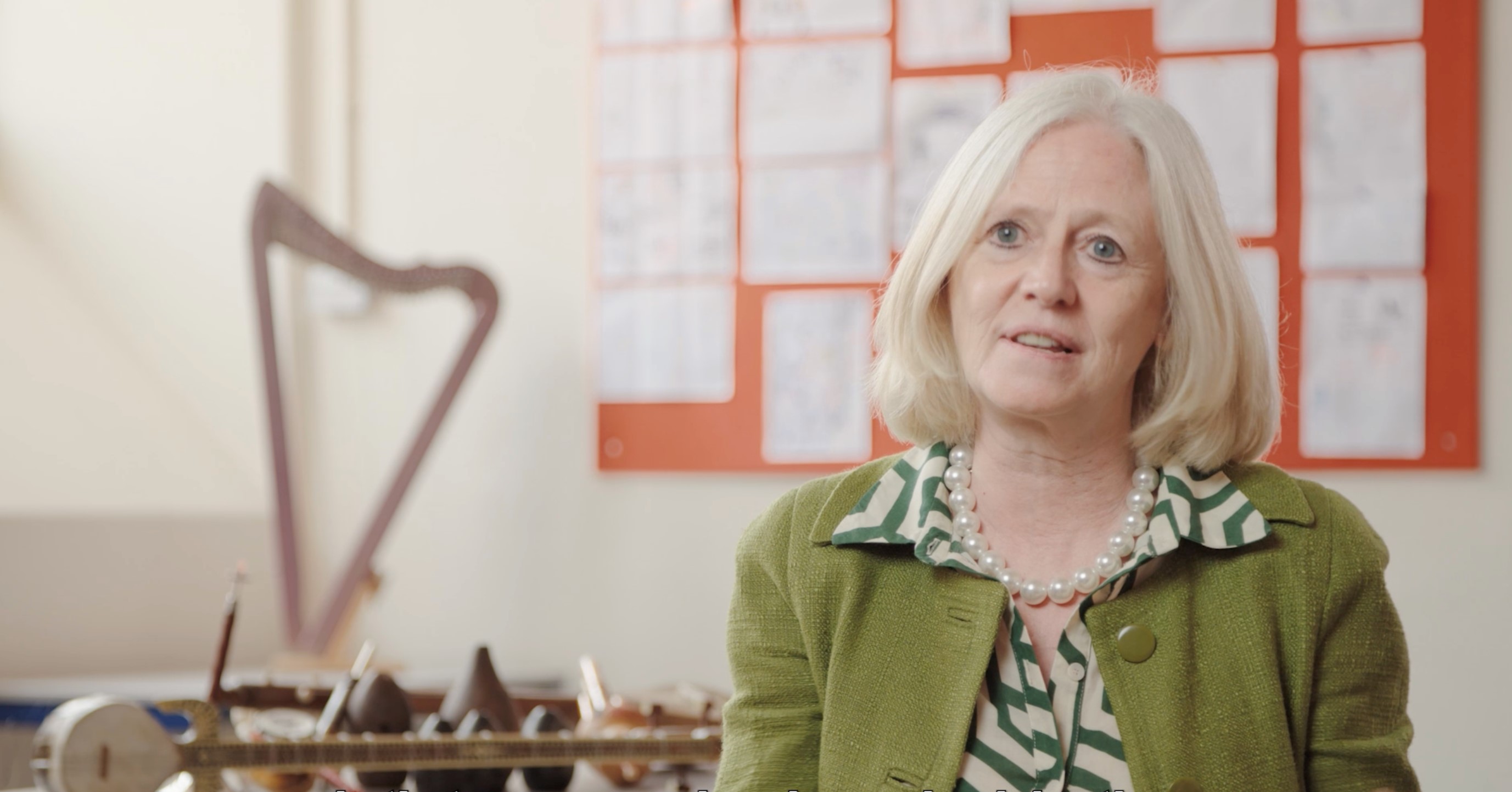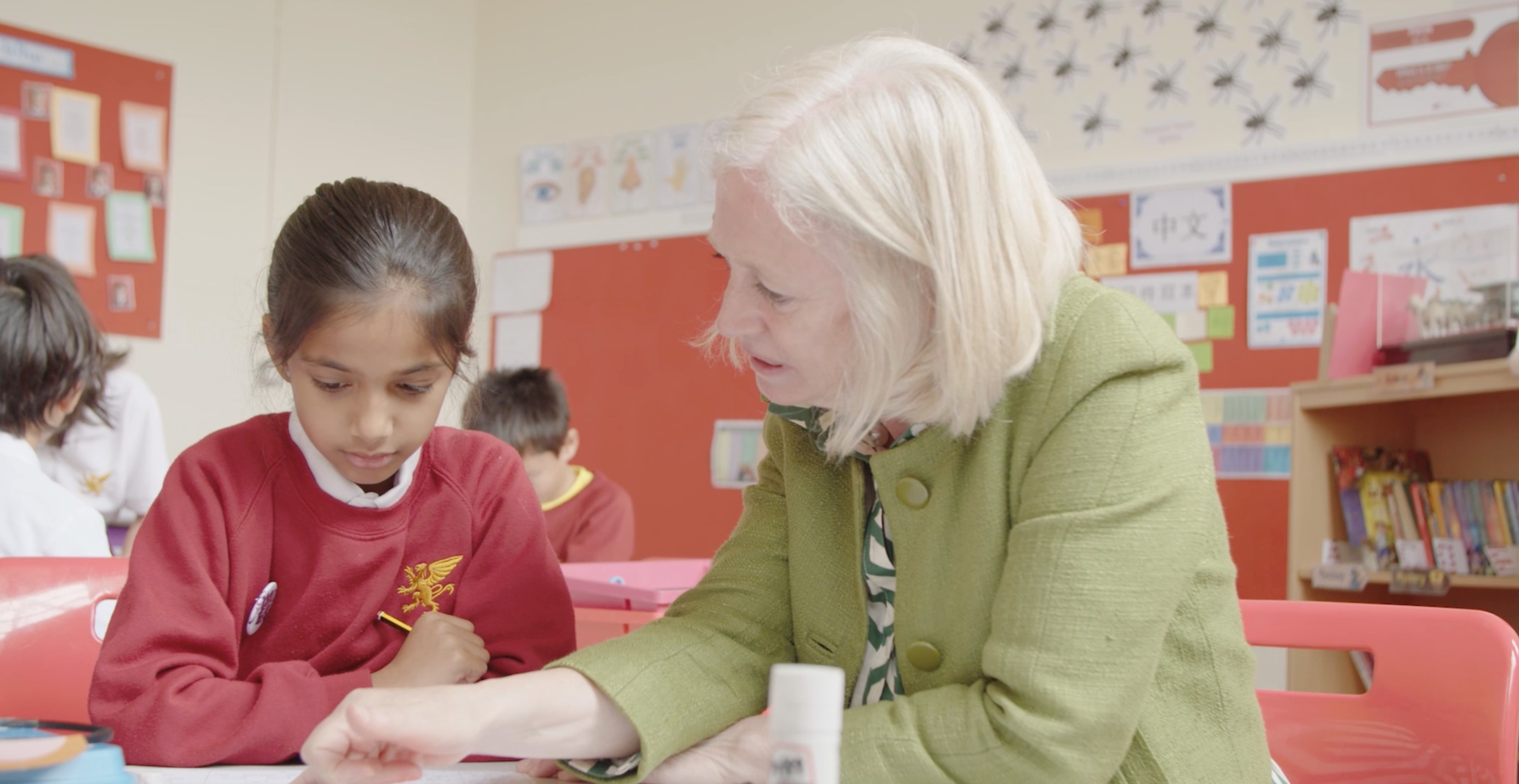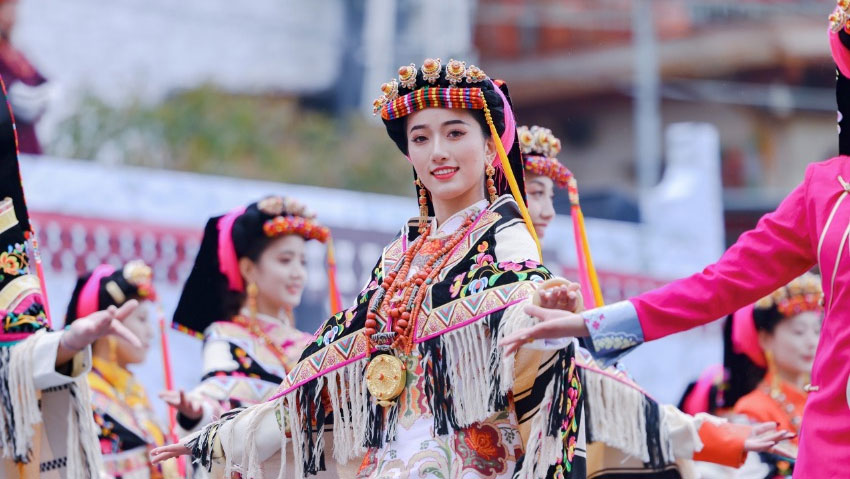Jo Wallace: Opening a new world through learning Chinese
Walking into the classrooms of Europe’s first bilingual English-Chinese school, Kensington Wade, one cannot help to be amazed by the children’s listening, speaking, reading, and writing abilities in Chinese. Here, more than 100 children from the ages of 3 to 11 are immersed in a bilingual English-Chinese learning environment. When the school was first founded in 2017, there were only 15 students, and as it has gradually grown over the last six years, the first Year 6 cohort will graduate and go to senior schools next year.

Jo Wallace (Photo/Patrick Shead-Simmonds)
The Principal of Kensington Wade, Jo Wallace, considers that learning Chinese opens new doors to the world for children, not only expanding their global horizon but also embracing diverse cultures. Whenever Wallace speaks about the children at Kensington Wade, a proud smile spreads across her face. During break time, she diligently checks in with each class, sometimes kneeling down to talk with the children.
A bilingual English-Chinese education starting at 3

Jo Wallace with students in a Chinese lesson? (Photo/Patrick Shead-Simmonds)
Similar to other UK prep schools, Kensington Wade primarily prepares students for entry into senior schools at the age of 11. However, the school achieves this through an immersive bilingual model. Wallace said that Kensington Wade hopes that children will achieve three crucial aims: fluency in one of the hardest languages to learn in the world --- Chinese; embracing China’s rich and fascinating cultures; and developing a bilingual brain. She said, “Chinese and English are by far the most important languages across the world. China plays such an important role and will do so increasingly; this makes speaking fluent Chinese crucial. An immersive bilingual education gives a huge advantage to children going forward.”
Kensington Wade’s immersive bilingual model is unique in the UK. Before opening the school, Wallace visited bilingual schools in the US and China, and she learned a huge amount from them. Kensington Wade’s curriculum is based on a UK prep school, but the children spend half their day in an English classroom with English teachers and the other half of the day in a Chinese classroom with Chinese teachers. So, during half of the day they might have a math lesson in English and then a literacy lesson; during the other half, they might have science, history, and P.E., but these subjects will be taught in Chinese. The school makes sure that English and Chinese staff plan lessons carefully together.
Wallace also shared her own story of learning Chinese. When she was appointed as the head of Kensington Wade in 2017, she thought her background in music would enable her to hear the tones and pick Chinese up very quickly. However, within weeks, the children were way better than her at Chinese! Wallace said, “It is incredibly hard if you are trying to learn Chinese at my age. You have to start at the age of three because children just pick up languages like sponges. This is why receiving a bilingual education from an early age is important. I am blown away by the fact that these tiny three-year-olds with no knowledge of Chinese are, within weeks, counting in Chinese rather than in English. As the principal of Kensington Wade, every day I just glow with pride for what I see at the school.”
Every year, Kensington Wade achieves great success in the annual Chinese Bridge Competition. Many children have won national competitions for their year groups. In October 2023, a girl from the school went to China for two weeks to represent the UK at the finals of Chinese Bridge. In 2022, Kensington Wade also won the Independent Schools Association (ISA) Award for Innovation in Education because of its unique English-Chinese education model. The school has received many visits from head teachers and educationalists from schools around the world including Malaysia, Singapore, Australia and the US.
Engaging with Chinese traditions and embracing diverse cultures

Jo Wallace in the classroom? (Photo/Patrick Shead-Simmonds)
Wallace considers teaching Chinese culture a crucial aspect of Kensington Wade. The school engages with Chinese culture across the whole curriculum. If the children are doing a geography lesson in English, they might be looking at British rivers. When they have a geography lesson in Chinese, they will look at Chinese rivers. So, the school ensures that the context of learning in Chinese is very much looking at Chinese culture and civilization. In Kensington Wade’s co-curricular program, there is a mix of both English and Chinese activities, including Chinese percussion, Chinese calligraphy, and Chinese dancing. When the school visited the Victoria and Albert Museum, the children had a wonderful time exploring the Chinese gallery and appreciating the exhibits.
Kensington Wade frequently organizes Chinese cultural events. Chinese New Year, the Dragon Boat Festival and the Mid-Autumn Festival are all key events in the school’s calendar. For Chinese New Year, the school had a fantastic fair for the children, which included a whole carousel of different activities ranging from calligraphy and riddles to dressing up and face painting, as well as a lion dance. At the time of the interview, all of the children were rehearsing for a Chinese performance of “Journey to the West” with the words and music written by themselves. The children also had assistance from a professional Peking Opera instructor who helped them with their movements and their dancing. The performance was accompanied by a fantastic Chinese percussionist named Beibei Wang.
Several of the year groups in Kensington Wade already have pen pals from Chinese schools and Year 6 children will be going to China after they finish their assessments for senior school admissions. They will meet and exchange with their pen pals and visit the pen pals’ schools. The school is also developing a partnership with local schools so that children in the area who do not attend Kensington Wade can also get some benefits from its amazing Chinese teachers.
The outward-looking learning environment of Kensington Wade encourages the school community to embrace diverse cultures. Wallace shared that many parents have an international global outlook and speak multiple languages. One-third of the students at Kensington Wade do not have any Chinese heritage. The multi-cultural international body of students also really reflects London as a cosmopolitan city. Children have inspired their parents to learn Chinese. The school has been asked by parents to run a course after school so parents can start to learn the language and understand Chinese culture alongside their children.
Next year is quite a landmark for Kensington Wade. It is the first year that the school will have two classes in reception, as well as the first time that Year 6, the top tier year, will be taking exams for entry into senior schools and leaving Kensington Wade. The school will be running an alumni program for them which will ensure that they carry on engaging with the language and culture at the very high level that they have achieved at Kensington Wade. Wallace said she hopes that the school will continue to nurture more excellent world citizens.
Photos
Related Stories
- Workplace Chinese language gains popularity as BRI cooperation deepens
- Rwanda hosts EAC symposium on Chinese language education
- Mongolia holds expo on Chinese language study, career in Chinese enterprises
- Interview: Interest in learning Chinese skyrocketing in Cameroon
- Kabul University celebrates "Confucius Institute Day" with Chinese language competition
- Feature: Mandarin learning flourish in British schools
Copyright © 2023 People's Daily Online. All Rights Reserved.









